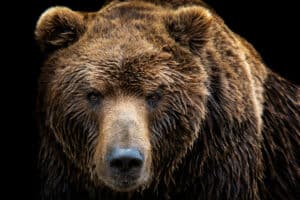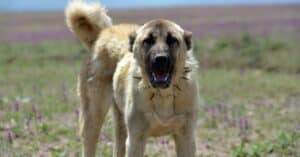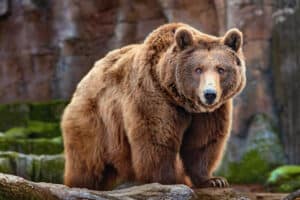The extinction story of the California Grizzly Bear is one of the saddest real-life humans-and-animals stories. To date, California Grizzly bears are among the most intriguing bear species known by every bear-lover, and their extinction is a large sign that humans have to do better in treating nature.
This article considers California grizzly bears, their extinction, and a set of tips that can help ensure that we don’t lose any more animal species due to controllable situations. It is worth noting that the original population of grizzly bears in California was thought to be about 10,000 before people settled in large numbers.
When Did The California Grizzly Bear Go Extinct?
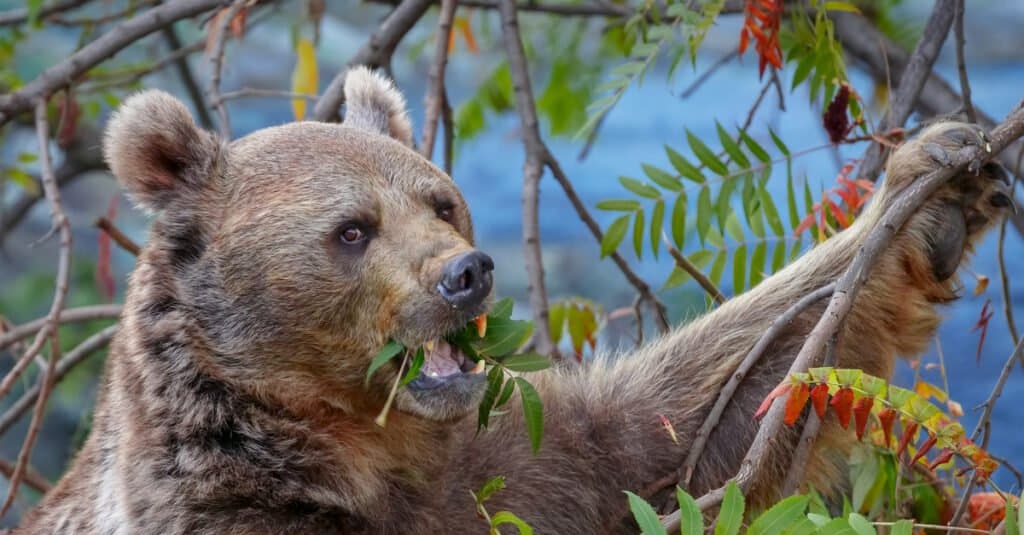
Grizzly bears in California finally became extinct in 1924.
©ovbelov/Shutterstock.com
The California grizzly bears were thought to be extinct in 1922, but in 1924, a grizzly bear was spotted briefly. Grizzly bears have never been seen in California since then.
How Did The California Grizzly Bear Go Extinct?
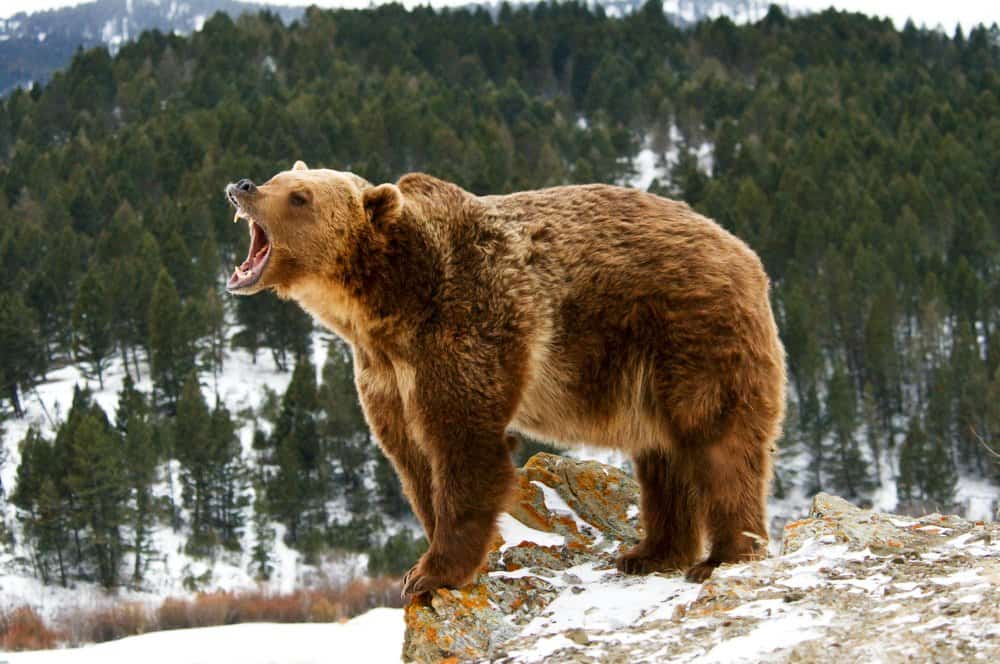
California grizzly bears were hunted into extinction.
©Scott E Read/Shutterstock.com
In the 1700s, more and more people began to populate the state of California. This drove the need for land up, inevitably leading to humans stepping more and more into animal territory. Due to the clearing of trees and the manipulation of water bodies, many animals fled to safer territories, and those who couldn’t, died.
Grizzly bears, on the other hand, did not move; they refused to be pushed out of their homes by humans. This drove bear attacks on humans and livestock up, and soon, a clear enmity was created. Obligated to protect themselves and their families, hunters began hunting and killing these bears. By the late 1700s, the hostility had evolved to a full bear versus human war.
Since bears can’t be captured as one would a dog, people got creative and made poisoned baits. Meals were injected with lethal doses of strychnine and hung on trees- out of the reach of children and pets. Captured bears were made to fight other bears and even bulls. Bears were also a source of food and clothing for Californian settlers.
As the war progressed, several places were even deemed “good spots” for bear capture. Soon, humans no longer waited for the bears to attack or even come out. Instead, they went after them in their hiding places. Places such as the Bear Trap Canyon near Bixby Creek were visited for the sole purpose of capturing bears.
Two centuries passed, but humans continued to hunt bears even as it became apparent that their populations were decreasing. More and more settlers placed bounties on bears, even bears who tried their best to stay hidden. Many bounty hunters recorded hundreds of bear kills. A hunter named Absolom (Rocky) Beasley claimed to have killed 139 bears, while Seth Kinman, a California mountain man, claimed to have shot at least 800 bears.
In August 1922, the last grizzly bear was hunted down and shot in Tulare County. They were believed to be extinct, but in 1924, a grizzly bear was spotted in Sequoia National Park but was never seen again.
The Dangers of Extinction
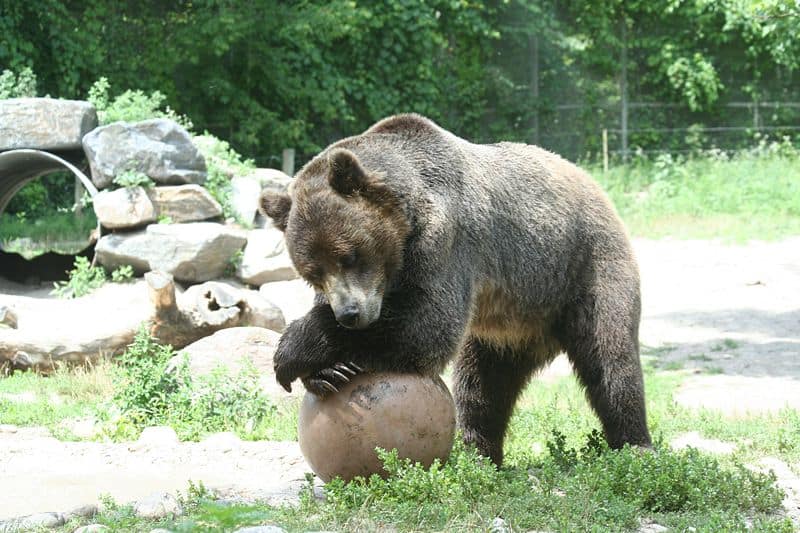
Grizzly Bear
When animals become extinct, the balance of the ecosystem shifts, and this affects everyone. Every animal has a unique position in the food chain. If one animal is removed, other animals either lose predators or prey. This can result in less food and more animals dying. It can also result in some species growing to extreme populations, since there are no predators to curb their growth.
Extinction may also harm humans in other ways. Many medical achievements were made from knowledge or materials gained from animals. When animals go extinct without being studied by modern scientists, we are left not knowing what more we could have learned from them to improve the lives of humans.
One other extreme but possible effect of extinction is the actual end of the world. If an animal species becomes extinct, they can gradually cause other species to become extinct, as we’ve explained before. This will cause the slow but steady extinction of animals and the reduction of carbon dioxide.
Humans cannot produce enough carbon dioxide to sustain plants, so the gradual degeneration of the earth will begin, turning the earth into barren land and effectively killing all humans. Extreme? Perhaps- but it is still possible. Californians probably never thought that grizzly bears would go extinct.
How To Prevent Extinction of More Animal Species
Do not hunt or kill non-threatening animals, including snakes. Most snakes are just as wary of you as you are of them and would gladly leave you alone if you leave them alone. Promoting healthy animal killing practices for food is also a good idea if the vegan life is not for you. This includes controlled killing and healthy animal breeding. It is also important to learn how to live with any wild species that live in large numbers in your area.
Remember that if you have a large population of any species in your area, that might be their natural habitat, and they have as many rights to that place as you. Eliminating them from that area might lead or contribute to their total extinction. Cherish your local animals as they may not be found anywhere else. Many animals, such as the golden lancehead, have only one natural habitat on Earth.
The photo featured at the top of this post is © Falade Adewale/Shutterstock.com
Thank you for reading! Have some feedback for us? Contact the AZ Animals editorial team.



